The ancient Egyptian known as Pediese, married to the great-great-granddaughter of Shoshenq III, was one of a number of princes ruling Lower Egypt towards the end of the eighth century BCE. He was of Libyan descent, a chief of the Ma. After Piye conquered Memphis, Pediese surrendered his residence Athribis and may well have been instrumental in bringing about the surrender of most of the other chiefs and kings ruling the Nile Delta.
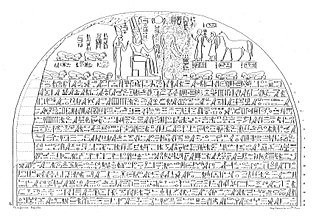
Piye was an ancient Kushite king and founder of the Twenty-fifth Dynasty of Egypt, who ruled Egypt from 744–714 BC. He ruled from the city of Napata, located deep in Nubia, modern-day Sudan.

Shebitku also known as Shabataka or Shebitqo, and anglicized as Sethos, was the second pharaoh of the Twenty-fifth Dynasty of Egypt who ruled from 714 BC – 705 BC, according to the most recent academic research. He was a son of Piye, the founder of this dynasty. Shebitku's prenomen or throne name, Djedkare, means "Enduring is the Soul of Re." Shebitku's queen was Arty, who was a daughter of king Piye, according to a fragment of statue JE 49157 of the High Priest of Amun Haremakhet, son of Shabaka, found in the temple of the Goddess Mut in Karnak.
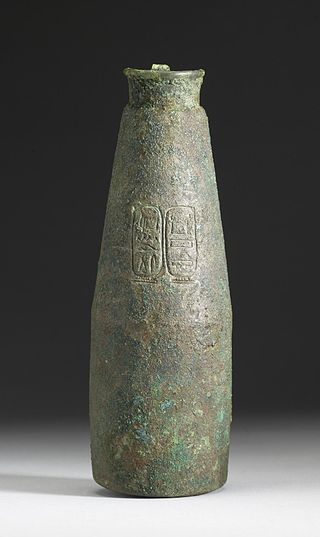
Kashta was an 8th century BCE king of the Kushite Dynasty in ancient Nubia and the successor of Alara. His nomen k3š-t3 "of the land of Kush" is often translated directly as "The Kushite". He was succeeded by Piye, who would go on to conquer ancient Egypt and establish the Twenty-Fifth Dynasty there.

Shepsesre Tefnakht was a prince of Sais and founder of the relatively short Twenty-fourth Dynasty of Egypt; he rose to become a Chief of the Ma in his home city. He is thought to have reigned roughly 732 BCE to 725 BCE, or seven years. Tefnakht I first began his career as the "Great Chief of the West" and Prince of Sais and was a late contemporary of the last ruler of the 22nd Dynasty: Shoshenq V. Tefnakht I was actually the second ruler of Sais; he was preceded by Osorkon C, who is attested by several documents mentioning him as this city's Chief of the Ma and Army Leader, according to Kenneth Kitchen, while his predecessor as Great Chief of the West was a man named Ankhhor. A recently discovered statue, dedicated by Tefnakht I to Amun-Re, reveals important details about his personal origins. The statue's text states that Tefnakht was the son of a certain Gemnefsutkapu and the grandson of Basa, a priest of Amun near Sais. Consequently, Tefnakht was not actually descended from either lines of Chiefs of the Ma and of the Libu as traditionally believed but rather came from a family of priests, and his ancestors being more likely Egyptians rather than Libyans.

Usermaatre Setepenamun Takelot III Si-Ese was Osorkon III's eldest son and successor. Takelot III ruled the first five years of his reign in a coregency with his father, according to the evidence from Nile Quay Text No.13, and succeeded his father as king the following year. He served previously as the High Priest of Amun at Thebes. He was previously thought to have ruled Egypt for only 7 years until his 13th Year was found on a stela from Ahmeida in the Dakhla Oasis in 2005.

Shepenupet II was an ancient Egyptian princess of the 25th Dynasty who served as the high priestess, the Divine Adoratrice of Amun, from around 700 BC to 650 BC. She was the daughter of the first Kushite pharaoh Piye and sister of Piye's successors, Shabaka and Taharqa.

Usermaatre Osorkon IV was an ancient Egyptian pharaoh during the late Third Intermediate Period. Traditionally considered the last king of the 22nd Dynasty, he was de facto little more than ruler in Tanis and Bubastis, in Lower Egypt. He is generally – though not universally – identified with the King Shilkanni mentioned by Assyrian sources, and with the biblical So, King of Egypt mentioned in the second Books of Kings (17:4).

Iuput II was a ruler of Leontopolis, in the Nile Delta region of Lower Egypt, who reigned during the 8th century BC, in the late Third Intermediate Period.

The Kingdom of Kush, also known as the Kushite Empire, or simply Kush, was an ancient kingdom in Nubia, centered along the Nile Valley in what is now northern Sudan and southern Egypt.
Tabiry was a Nubian queen dated to the Twenty-fifth Dynasty of Egypt.
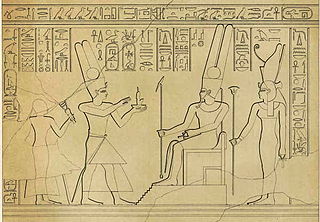
Abar was a Nubian queen of the Kingdom of Kush dated to the Twenty-fifth Dynasty of Egypt. She is known from a series of stela found in Sudan and Egypt. Her appearances mark her as the niece of King Alara of Nubia, married to King Piye and the mother of King Taharqa.
Khensa (Khenensaiuw) was a Nubian queen dated to the Twenty-fifth Dynasty of Egypt.
Peksater (Pekerslo) was a Nubian queen dated to the Twenty-fifth Dynasty of Egypt.

Naparaye was a Nubian queen dated to the Twenty-fifth Dynasty of Egypt.

The Twenty-fourth Dynasty of Egypt is usually classified as the fourth Dynasty of the Ancient Egyptian Third Intermediate Period.

The Twenty-fifth Dynasty of Egypt, also known as the Nubian Dynasty, the Kushite Empire, the Black Pharaohs, or the Napatans, after their capital Napata, was the last dynasty of the Third Intermediate Period of Egypt that occurred after the Kushite invasion.

Nimlot was an ancient Egyptian ruler ("king") of Hermopolis during the 25th Dynasty.
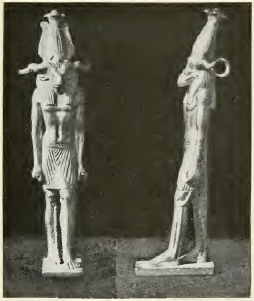
Peftjauawybast or Peftjaubast was an ancient Egyptian ruler ("king") of Herakleopolis Magna during the 25th Dynasty.
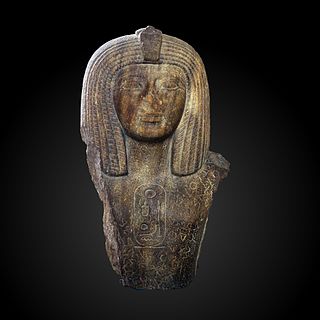
Pi-Sekhemkheperre or Per-Sekhemkheperre, was an ancient Egyptian stronghold. Its name means "The estate of Sekhemkheperre", a reference to Sekhemkheperre Osorkon I, the pharaoh of the early 22nd Dynasty who founded the fortress during his reign. It has been suggested that its erection may be a symptom of the state of general insecurity in the country during the period.
Pi-Sekhemkheperre is at yet undiscovered but it is believed that it lies somewhere at the entrance of the Faiyum, just north to Herakleopolis Magna in Middle Egypt.
Hedjkheperre Setepenre Shoshenq (VII/VIa) Si-Ese Meryamun may have been an Egyptian king of the 23rd Dynasty, ruling Thebes in the period between the death of Takelot III and the Egyptian campaign of the Nubian king Piye, c. 755–730 BCE. The length of his reign has been estimated variously as between five and twenty-five years. He is poorly attested, and his existence remains a matter of some dispute, but his short reign is supported by leading experts on the Third Intermediate Period such as Gerard Broekman and Kenneth Kitchen.